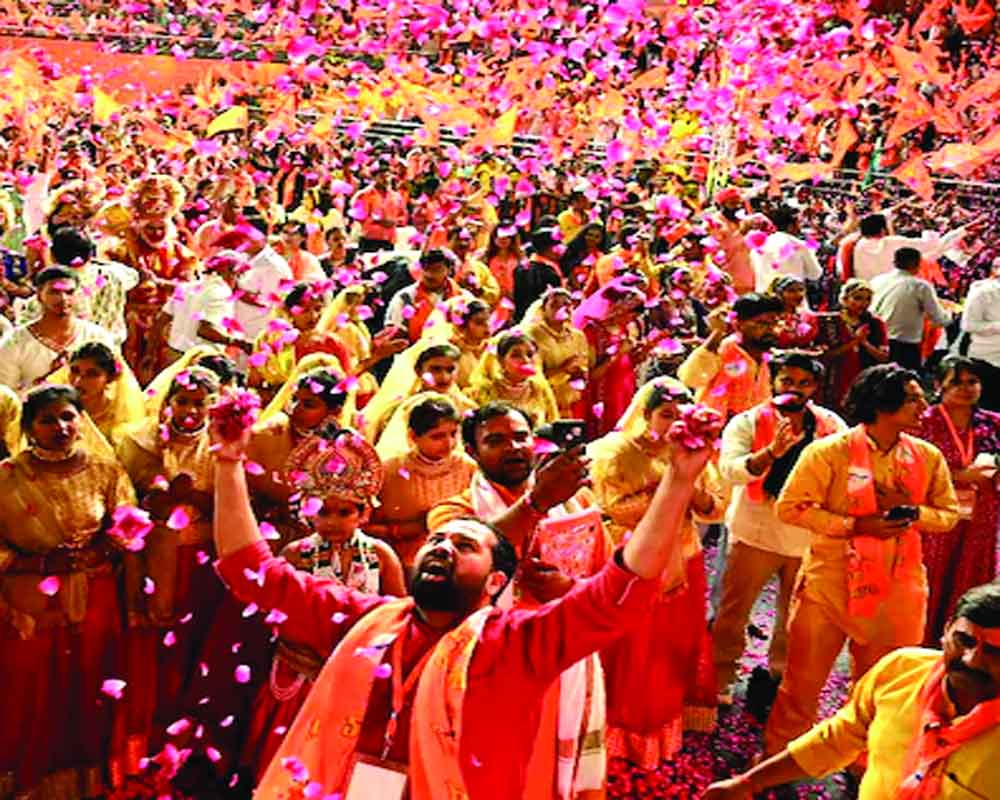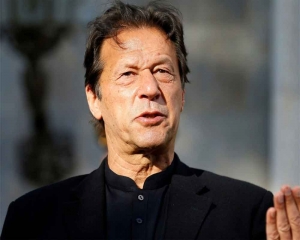A study titled "Share of Religious Minorities - A Cross Country Analysis ( 1950-2015) by the Economic Advisory Council to the Prime Minister (EAC-PM) has revealed that the population share of the majority religion in India (Hindus) declined sharply by 7.8 per cent between 1950 and 2015, while a number of neighbouring countries saw a jump in the population of their majority community.
While the Hindu population shrunk in India, the share of minorities, including Muslim, Christian, Buddhist and Sikhs, went up. However, the number of Jains and Parsis in the population saw mix decrease. Between 1950 and 2015, the Muslim population share in India surged by 43.15 per cent, Christians saw a 5.38 per cent increase, Sikhs a 6.58 per cent rise, and Buddhists a slight increase.
The study, released in May 2024, assessed trends in 167 countries across the world. The authors of the study say, "India's performance is consistent with the larger global trends." The study highlighted that the share of the majority Hindu population decreased by 7.82 per cent between 1950 and 2015 (from 84.68 per cent to 78.06 per cent) in India. The share of Hindus in India's population saw a decrease from 84 per cent in 1950 to 78 per cent in 2015, while that of Muslims witnessed an increase from 9.84 per cent to 14.09 per cent in the same period (of 65 years).
"The share of Muslim population in 1950 was 9.84 per cent and increased to 14.09 per cent in 2015 — a 43.15 per cent increase in their share. The share of Christian population rose from 2.24 per cent to 2.36 per cent — an increase of 5.38 per cent between 1950 and 2015.The share of Sikh population increased from 1.24 per cent in 1950 to 1.85 per cent in 2015 — a 6.58 per cent rise in their share. Even the share of the Buddhist population witnessed a noticeable increase from 0.05 per cent in 1950 to 0.81 per cent. On the other hand, the share of Jains in the population of India decreased from 0.45 per cent in 1950 to 0.36 per cent in 2015. The share of the Parsi population in India witnessed a stark 85 per cent decline, reducing from 0.03 per cent share in 1950 to 0.004 per cent in 2015," it said
The shrinking of the majority population in India (by 7.8 per cent) is the second most significant decline in the immediate neighbourhood, just after Myanmar's 10 per cent.
Apart from India, Nepal's majority community (Hindu) saw a 3.6 per cent decline in its share of the country's population. Buddhists, who constituted 11 per cent of the population in 1950 also witnessed a 25 per cent decrease and their share was reduced to 8 per cent in 2015. On the other hand, the share of Muslim population increased from 2.6 per cent to 4.6 per cent — a jump of 75 per cent. In 1950, the share of Christian population in Nepal was approximately zero.
By 2015, it had grown to almost two percent of the total population.
On the Indian subcontinent, all the Muslim majority countries witnessed an increase in the share of the majority religious denomination except Maldives where the share of the majority group (Shafi'i Sunnis) declined by 1.47 per cent. In Bangladesh, there was an 18 per cent increase in the share of the majority religious group which is the largest such increase in the Indian subcontinent.
Pakistan witnessed an increase of 3.75 per cent in the share of the majority religious denomination (Hanafi Muslim) and a 10 per cent increase in the share of total Muslim population despite the creation of Bangladesh in 1971. The demographic shocks inflicted upon the Hindu population in Pakistan is evidenced by a decline in their share - from constituting 13 per cent in 1950 to just 2 per cent in 2015. This is a monstrous 80 per cent decrease over a 65-year period where minorities on average increased by 22 per cent globally. Intriguingly, the share of Christians in Pakistan almost doubled from 1 to 2 per cent in the same period.
The share of the Buddhist population in Myanmar declined by 10 per cent from 84 per cent in 1950 to 75 per cent in 2015. In the same period, the share of Christian population almost doubled (from 4 per cent to 8 per cent) and the share of indigenous religions (such as Animism and Shamanism) witnessed a 25 per cent increase (from 7 per cent to 9 per cent).
"Of the 45 major countries, the share of the majority population has decreased in 32 countries between 1950 and 2015 while the religious majority has increased its share in the population in 13 countries," the study said.
"Contrary to the noise in several quarters, careful analysis of the data shows that minorities are not just protected, but indeed thriving in India," the authors said.
For the 167 countries in our analysis, the average value for the share of the majority religious denomination in the baseline year of 1950 is 75 per cent. This means that globally the share of the majority religious denomination has gone down by approximately 22 per cent. In other words, the world has become more heterogeneous in the period under study.


























